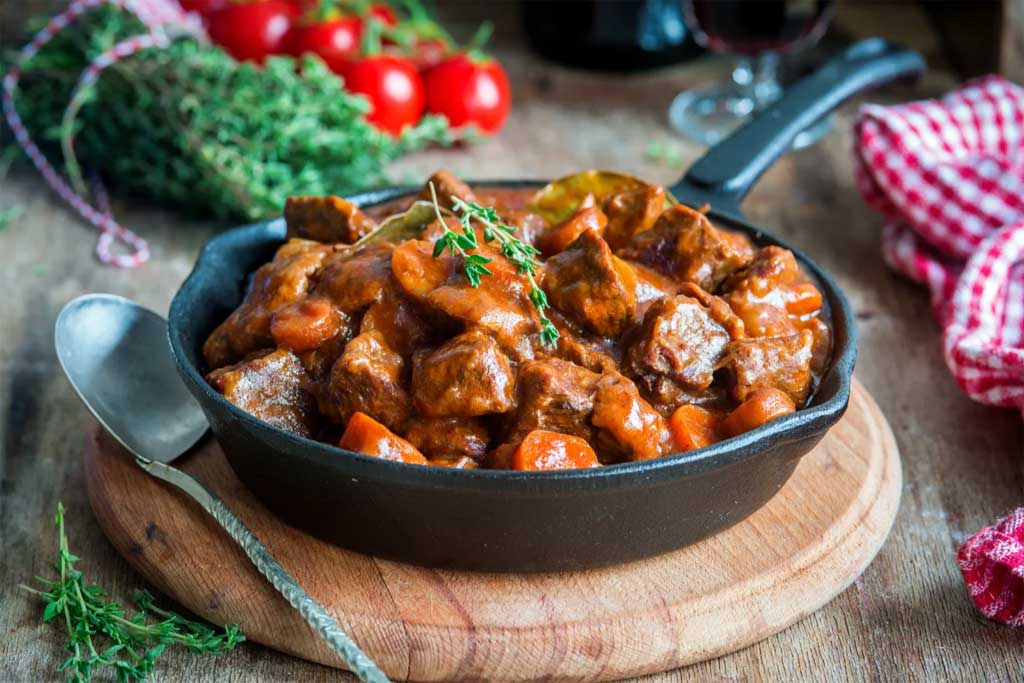Mediterranean French Cuisine blends the fresh, sun-kissed ingredients of the Mediterranean coast with traditional French cooking techniques. Known for vibrant flavors, emphasis on fresh, local ingredients, and light but satisfying dishes, this style of cooking is especially prevalent in Provence and the French Riviera (Côte d'Azur) regions.
Here’s an overview of the hallmarks and key dishes of Mediterranean French cuisine.
Primary Ingredients & Influences
- Olive Oil: Essential in Provençal cooking, used for everything from dressings to sautés.
- Herbs: Herbs de Provence (a mix of rosemary, thyme, basil, marjoram, and savory) is ubiquitous. Fresh basil, parsley, and oregano are often added for flavor.
- Garlic and Onions: These add aromatic depth and are frequently used in aioli, ratatouille, and sauces.
- Seafood: The proximity to the Mediterranean Sea provides a bounty of seafood, including sea bass, red mullet, and mussels.
- Vegetables: Tomatoes, eggplants, zucchini, and bell peppers are staples, as seen in iconic dishes like ratatouille.
- Fruits: Citrus (especially lemons), figs, melons, and apricots feature prominently.
- Cheeses: Goat cheeses, as well as lighter cheeses like Gruyère, are common.
Notable French Dishes
-
Bouillabaisse: A rich, fragrant seafood stew originating from Marseille. It traditionally includes a variety of fish (like sea bass, red mullet, and rockfish), shellfish, and vegetables, with a broth flavored with saffron, fennel, and herbs. Served with rouille, a garlicky sauce, and crusty bread.
-
Ratatouille: A colorful vegetable dish from Provence, made by layering and roasting zucchini, eggplant, bell peppers, and tomatoes. It’s seasoned with herbs de Provence and garlic, often served as a side or main vegetarian dish.
-
Salade Niçoise: A hearty salad from Nice, traditionally made with tomatoes, olives, anchovies, and hard-boiled eggs, often topped with tuna. It's dressed in olive oil and occasionally includes green beans and potatoes.
-
Pissaladière: Similar to pizza, this savory tart has a base of caramelized onions, anchovies, and olives on a dough crust, often without tomato sauce. Originating from Nice, it highlights the briny flavors of anchovies and olives with the sweetness of onions.
-
Tapenade: A thick, savory paste made from olives, capers, and anchovies, typically served as an appetizer spread on crusty bread.
-
Socca: A thin, crispy chickpea flour pancake, popular as street food in Nice. Made simply with chickpea flour, water, olive oil, and a pinch of salt, it’s crispy on the edges and soft inside, often eaten hot and sprinkled with pepper.
-
Aioli: A garlic and olive oil emulsion served as a condiment or dip for vegetables, seafood, or spread on bread. Sometimes it's made with eggs to create a thicker, mayonnaise-like consistency.
Popular French Desserts
- Tarte Tropézienne: A rich dessert made famous in Saint-Tropez, consisting of a brioche filled with a light pastry cream.
- Clafoutis: A simple, custardy baked dessert traditionally made with black cherries but also works with other stone fruits.
- Lavender Honey and Calissons: Calissons are almond-based sweets from Aix-en-Provence, often paired with lavender honey, capturing the floral notes of Provence in a unique, aromatic dessert.
Beverages
- Rosé Wines: The Provence region is famed for its light and refreshing rosés.
- Pastis: An anise-flavored liqueur often enjoyed as an aperitif in the South of France.
- Herb-Infused Spirits: Made with local herbs like thyme, rosemary, and verbena.
French Cuisine Techniques
- Grilling and Roasting: Meat, seafood, and vegetables are often grilled or roasted to bring out their natural flavors.
- Slow Simmering: Used in stews like bouillabaisse to extract maximum flavor from ingredients.
- Herb-Infusion: Olive oil, butter, and sauces are often infused with herbs to enhance dishes without overwhelming the natural flavors.
Mediterranean French cuisine celebrates simplicity, freshness, and the vibrant flavors of the coast and countryside. It’s a light yet flavorful style perfect for anyone who enjoys fresh ingredients and refined but relaxed dining.
